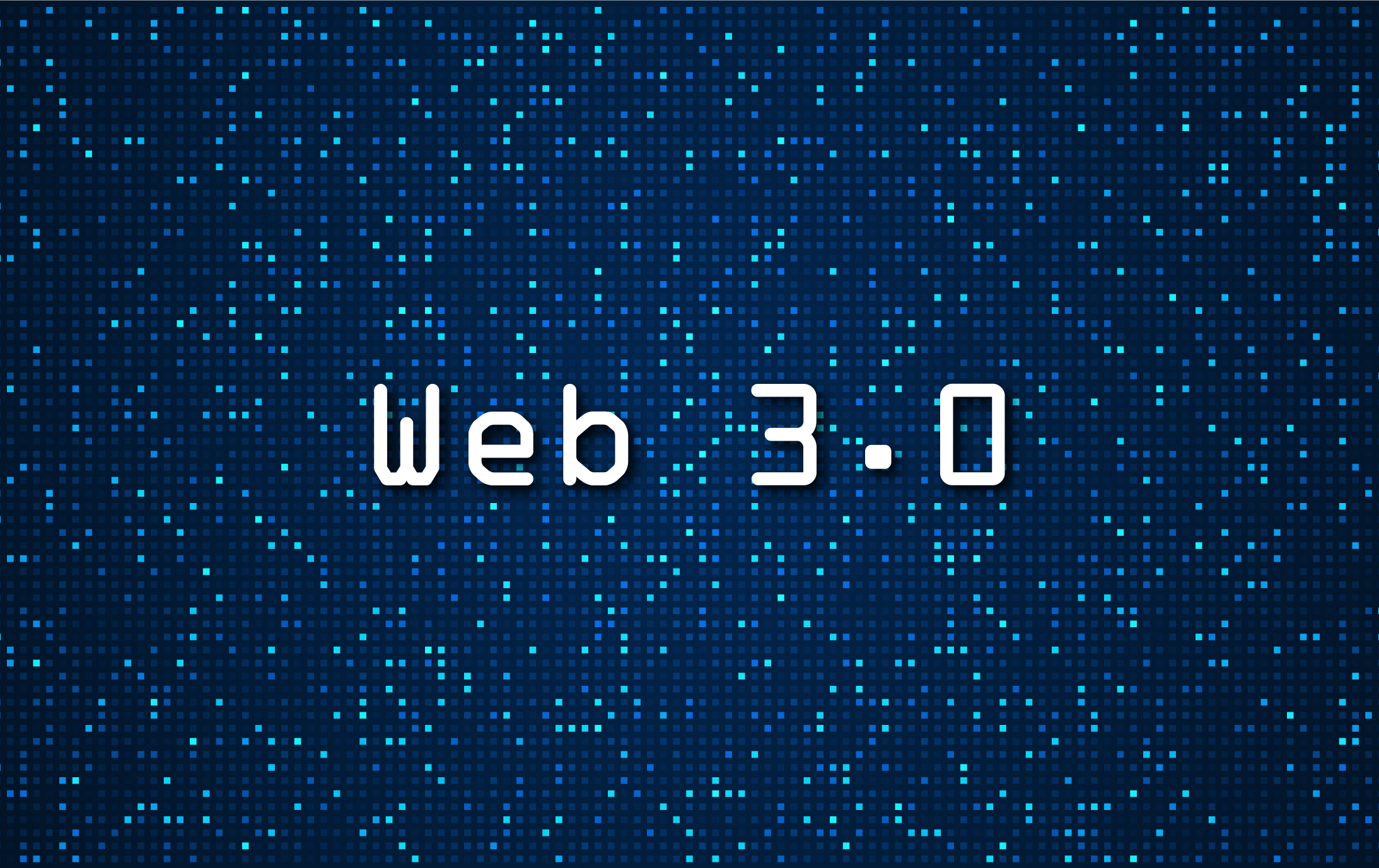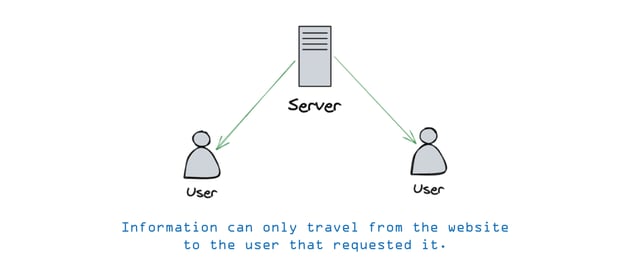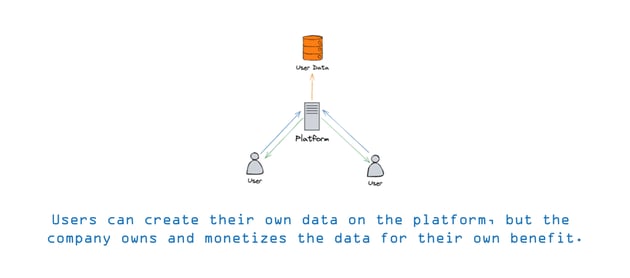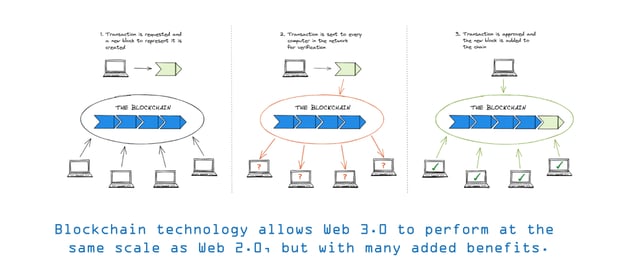What the Heck is Web 3.0?
The third iteration of the Web will be vastly different from it’s predecessors, so it is important to understand where we came from and where we are now, before we can see where we are headed with Web 3.0.

In the ever-evolving world of technology, buzzwords are what define an era. We’ve seen the information superhighway, the world wide web, dot com startups, social media, the cloud, crypto; the list goes on, and on. So, with the recent emergence of the newest buzzword, you may already be asking yourself, “What the heck is Web 3.0 and why should I care?” Isn’t this just going to be another tech trend that you will see pop up on your devices eventually?”
Web 3.0 isn’t technically a “thing”, it is a paradigm shift that is fundamentally different from the common understanding of today’s internet. The third iteration of the Web will be vastly different from it’s predecessors, so it is important to understand where we came from and where we are now, before we can see where we are headed with Web 3.0.
Web 1.0 (1990 - 2003)

The original vision for the Web was an open approach that allowed anyone with a computer to share information. If you had a computer and a little ambition, you could build a website and publish it for the world to see. Websites during this time were generally static, meaning the information on the page was always the same no matter who accessed the page. There was little interactivity or flashy animations (unless you count the snazzy animated GIF buttons you would see spread across a site like this old version of Yahoo from 1997), and there was no way for you to interact with the author of the site outside of contacting them via email.
The important point here is that the web was “owned” by the individuals and companies that decided to host their own websites. Every aspect of the site was in the control of the author and owner of the computer that hosted it. The only thing that people had to do was agree to follow a shared set of protocols to make the site accessible on the internet, and anyone in the world could find it in a browser.
Web 2.0 (2003 - Present)

2003 kicked off the second and current era of the modern Web, the “Social Web Era”. Myspace, Skype, Flickr, YouTube, Facebook, LinkedIn, Twitter, Reddit, and Tumblr are all launched over the span of a few short years and bring an entirely new capability along with them. Rather than only consuming data from a website, users could now create and publish their own information to these new platforms. The barrier to entry for creation on the Web changed from maintaining servers and website code to simply having an internet connection and an account on a platform. Users could then simply use a platform to distribute their content, and let the website host and maintain their data for them. This caused a mass influx of new users and exponential growth for the new social web.
Sadly, this speedy growth came with a cost. As more and more people began to regularly use the Web, a handful of platforms and companies gathered the majority of the attention. And when you are trying to make money off of a free to use internet platform, the user’s attention is absolutely everything. As the saying goes…“When the product is free, YOU are the product.”
Companies realized that the more information they could gather on individuals, the better they could monetize that knowledge the sell the advertisements that we all deal with today, bringing shady data collection, tracking techniques, and less than transparent privacy policies along with them. And when a private company controls all of the data on their platform, they are free to do with it what they will. There is nothing stopping a platform from intentionally reducing the reach of content that they disagree with, or even banning it entirely with no warning.
The contrast between who “owns” the information between Web 1.0 and Web 2.0 is clear. The social media era shifted the ownership of user generated content onto the platforms that host them, giving the companies the full control and monetization power over the content on their site. So while users have access to more information than ever, they are now just simple participants in the system instead of the drivers of the system itself.
Web 3.0 (Today - Future )

So, back to the original question; what is Web 3.0, how is it different from the current Web and, how will it affect me?
Web 3.0 aims to blend the personal ownership of Web 1.0 with the ease of use, interactivity, and functionality of Web 2.0, built on top of the same blockchain technology that powers modern cryptocurrencies.
You may be saying “Now wait a minute, what the hell is a blockchain?”, and that is a great question to ask. Blockchains are the foundation of all Web 3.0 concepts. They warrant an entire article of their own. But to keep things simple, a blockchain acts as a “globally distributed computer” that anyone can interact with but no one owns. Everything that happens on the blockchain is recorded and verified by each computer that participates, and every transaction (or block) is tied to the one that came before it (forming a “chain of blocks”) This distributes the information across many places rather than being centralized in one location, and makes it impossible for one computer to go back and make fraudulent changes. The change would only exist on that single computer and be rejected by all other participants that have different data. You can find a more detailed explanation of how a blockchain works here.
Blockchain technology allows Web 3.0 to perform at the same scale as Web 2.0, but with many added benefits.
Built-In Payments
Because Web 3.0 is built on top of the same blockchain technology as cryptocurrencies, they can be used as payment within the new Web. This already exists today with blockchains like Ethereum. Ethereum is the overall blockchain network that you can interact with, and Ether is the integrated payment currency.
The biggest benefit to this model is that payments happen peer to peer. Instead of relying on centralized institutions like banks or credit card companies to act as the middle man, the system can handle this natively. Peer to peer payments are faster, more easily accessible for individuals without bank or credit card accounts, and can’t be blocked or restricted by any single party.
Data Ownership
When a piece of information resides on a Web 3.0 blockchain, it’s ownership is known to all and trackable. If you create a piece of content like an image, video, song or web article, it belongs to you. It can’t be claimed by anyone else or taken down by any single party. If you don’t want it anymore, you can sell or transfer it to another user using the built-in payment system.
In addition to the ownership of data, Web 3.0 also brings the ownership of services back to the user. The built-in payment system can facilitate a system where users can hold tokens that act like shares in a company that are tied to a specific service. Holding a token gives you the right to vote on the direction of the service and the actions that it takes. You can imagine a Web 3.0 Social Media site that allows users to decide what content should reside on their platform, rather than the monolithic tech giants that operate through subjectivity and secrecy.
Decentralization
Because Web 3.0 data resides on a blockchain, it can be replicated across many computers rather than being stored in one place. Decentralization of information makes it extremely resilient to censorship or data loss.
As an example, many of us rely on centralized cloud service like Google Drive or iCloud to store files. The companies behind those services are entirely in control and are responsible for that data. If they lose it, it is gone. If they decide that they do not want to host it, it is gone.
Alternatively, Web 3.0 concepts power services like Storj decentralized cloud storage and IPFS that distribute data across the network. Unless every computer that contained a copy of your data was found and destroyed, it would be nearly impossible to remove or lose a piece of content.
Scalability
The decentralized nature of Web 3.0 also brings distributed computing, so products and services will be able to grow and accommodate more users in a more timely and efficient way than the current web. Every participant in the network is contributing a small amount of their own resources to power the collective network as a whole.
Put simply, it is much easier for one million computers to each do one thing, than it is for one computer to do one million things by itself.
The Future
Sounds a little too good to be true doesn’t it? Every technological leap will come with challenges before it can become a reality, and Web 3.0 is no different. The technology is still in it’s early stages and while the foundation is strong, there is plenty to be improved before we can expect a wide adoption of the general public. Every new bit of technology has it’s skeptics as well, so Web 3.0 will need to weather the inevitable issues of impending government regulations, cost of entry for new users, and the unfamiliarity and inconvenience of working within a new system.
In time, however, the technologies that are “Web 3.0” will be embedded more and more into every day life, and whether the Web 3.0 title sticks long term or not, it has made a lasting impression that will shape our internet connected lives for years to come.
Sourceree provides trusted intelligence services and proprietary software solutions that strengthen the National Security of the United States.

.png?width=200&name=Logo%20(Dark%20Blue%2c%20Black%20Txt).png)

